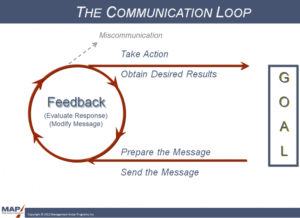Communication Habits Slipping Despite Digital Advancements?
For leaders and organizations worldwide, one of the biggest, more recent areas of learning has been around going digital—doing business differently through our screens, apps, online platforms and other electronic and web-based tools. A lot of these changes and “pivots” have occurred out of the need to ensure, among other things, effective communication with our staff and clients/customers. Yet ironically, in the midst of all those fast adaptations, some of our fundamental communication habits and practices have gone by the wayside.
As a leader, you know that good communication is vital to your organization’s health, regardless of whether your operations are normalized or experiencing crisis. And effective communication is equally important whether you’re operating via Zoom, over email or in person. If you’ve dropped the ball lately on those communication fundamentals, here are three ways pick it back up, making the commitment to reinstate good habits around this core leadership discipline:
Develop formal communication plans. In addition to a business plan, it’s really important to create two complementary communication plans—an internal one that supports your staff and how you all communicate with one another and an external plan that outlines how you’ll communicate with clients/customers and the public. With everyone relying more and more on digital communication, both plans should include digital communication strategies. But don’t forget that some traditional strategies can still be very powerful—they just may need to be tweaked or modernized a bit to remain relevant and effective.
Focus on fundamentals. At MAP, we do lots of coaching around communication fundamentals. It’s a huge part of what we do. In fact, we use the DiSC® profile to really help people understand their communication strengths and areas for improvement. Then as part of our executive workshops or executive coaching, we review results, helping them address underlying barriers to communication—things like resistance to feedback, troublesome communication assumptions, failing to state communication goals, and other big roadblocks. We find pretty much every organization, but particularly our growth-minded clients, really want to do communication work, even if it’s tough at times. That means embracing education around the topic, then developing the right communication goals and strategies.
Commit to consistency, establish your patterns. Once you’ve nailed down major communication fundamentals, it’s essential to execute against those fundamentals consistently. For example, that may mean 10-minute huddles every morning at 8 a.m., daily noon emails sharing that day’s company dashboard or Vital Factors® metrics, and then an end-of-the day text message sharing a win, tomorrow’s goal, or something newsworthy, relevant or inspiring. Whatever you do, create a doable pattern, commit to it, and then build consistent accountability around this daily communication habit.
Does your organization need a communication tune-up or outright overhaul? Download MAP’s effective communication checklist to improve communication and efficiency among teams.



